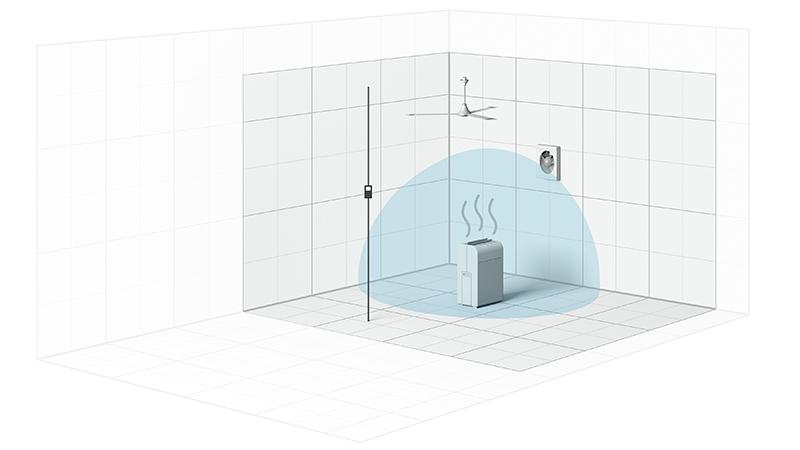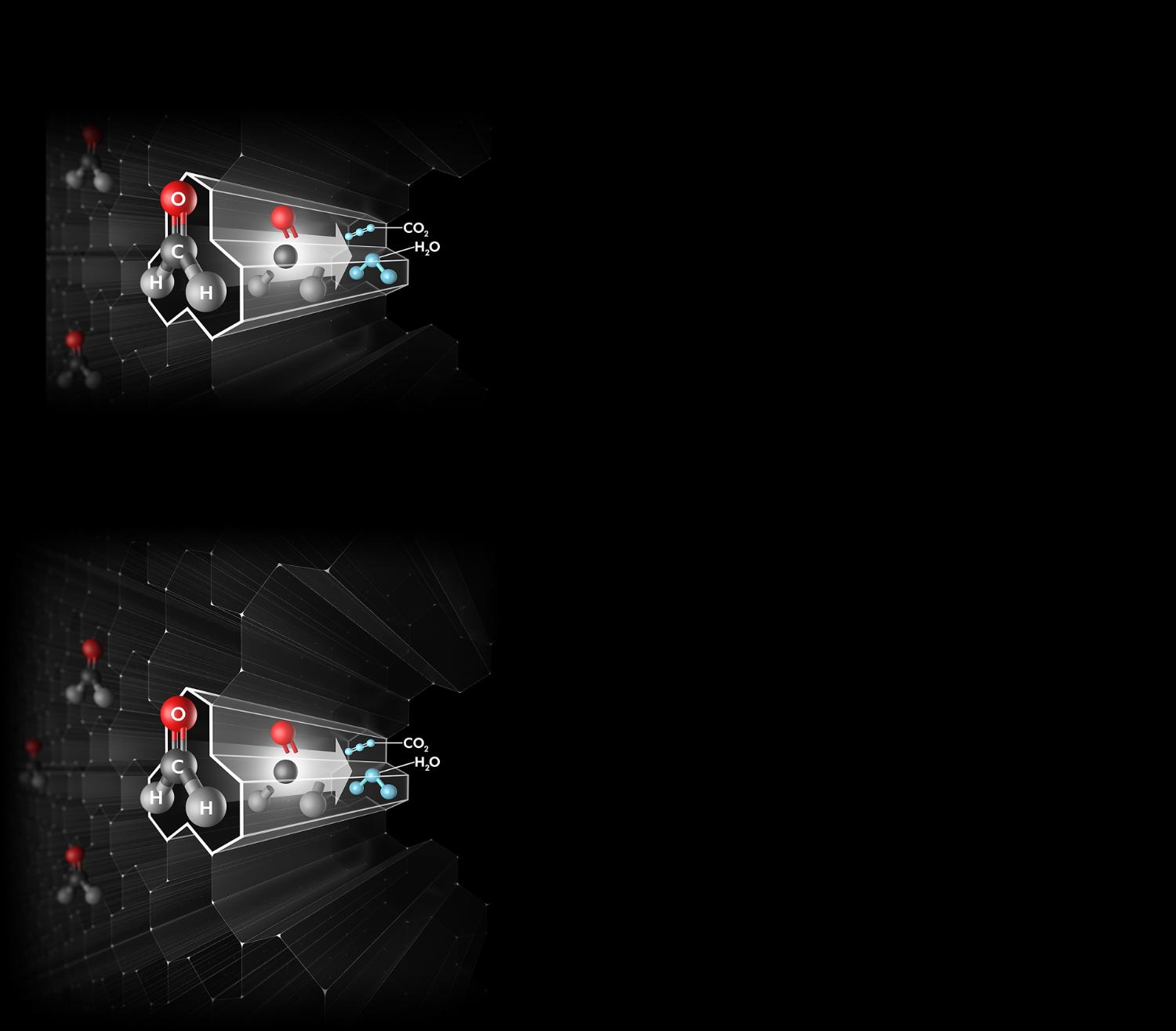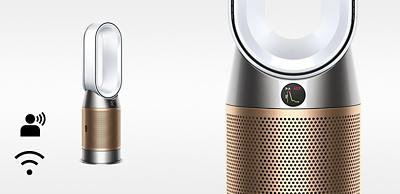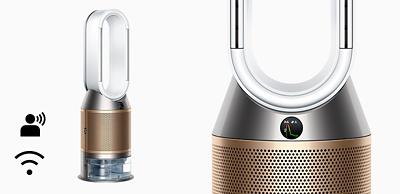*Dyson purifiers were challenged with airborne influenza A (H1N1 virus) and MS2 bacteriophage at an independent lab, using a 30 m3 chamber. After 60 minutes at maximum fan speed, the airbone concentration in the chamber was reduced up to 99.9%. Real-life may vary.
*Dyson purifiers were challenged with airborne SARS-CoV-2 (the virus that causes COVID-19) at an independent lab, using a 0.37 m3 chamber for 90 seconds. Dyson purifiers were also challenged with Phi-6 bacteriophage at an independent lab, using a 30 m3 chamber. After 90 minutes at maximum fan speed, the airbone concentration in the chamber was reduced up to 99.9%. Real-life may vary.
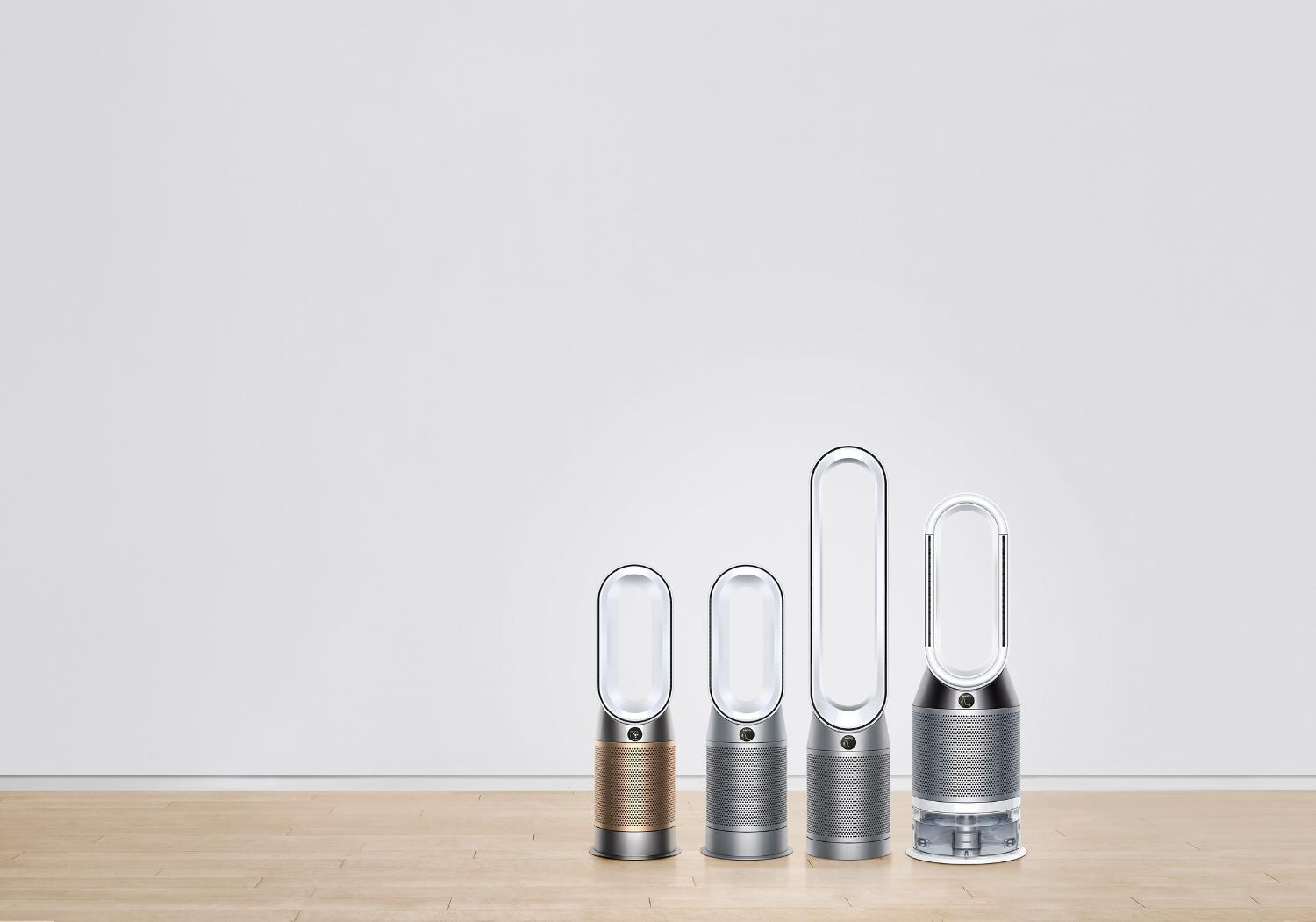
Reviews powered by Bazaarvoice
Dyson Purifier Hot+Cool™ HP09 Formaldehyde Purifying fan heater (White/Gold)
Overall rating
We test beyond the industry standard. For real living spaces.
Dyson engineers designed the POLAR test to challenge the industry test standard – measuring filtration, sensing and circulation to ensure the whole room is purified properly.
-

CADR is not a measure of purification performance in a real-size room 28.5m³
Two additional fans boost circulation. Only one sensor measures air quality.
-

Dyson's POLAR test goes further to measure purification throughout a real-size room 81m³
No additional fans. Nine different sensors to measure even-room air quality.
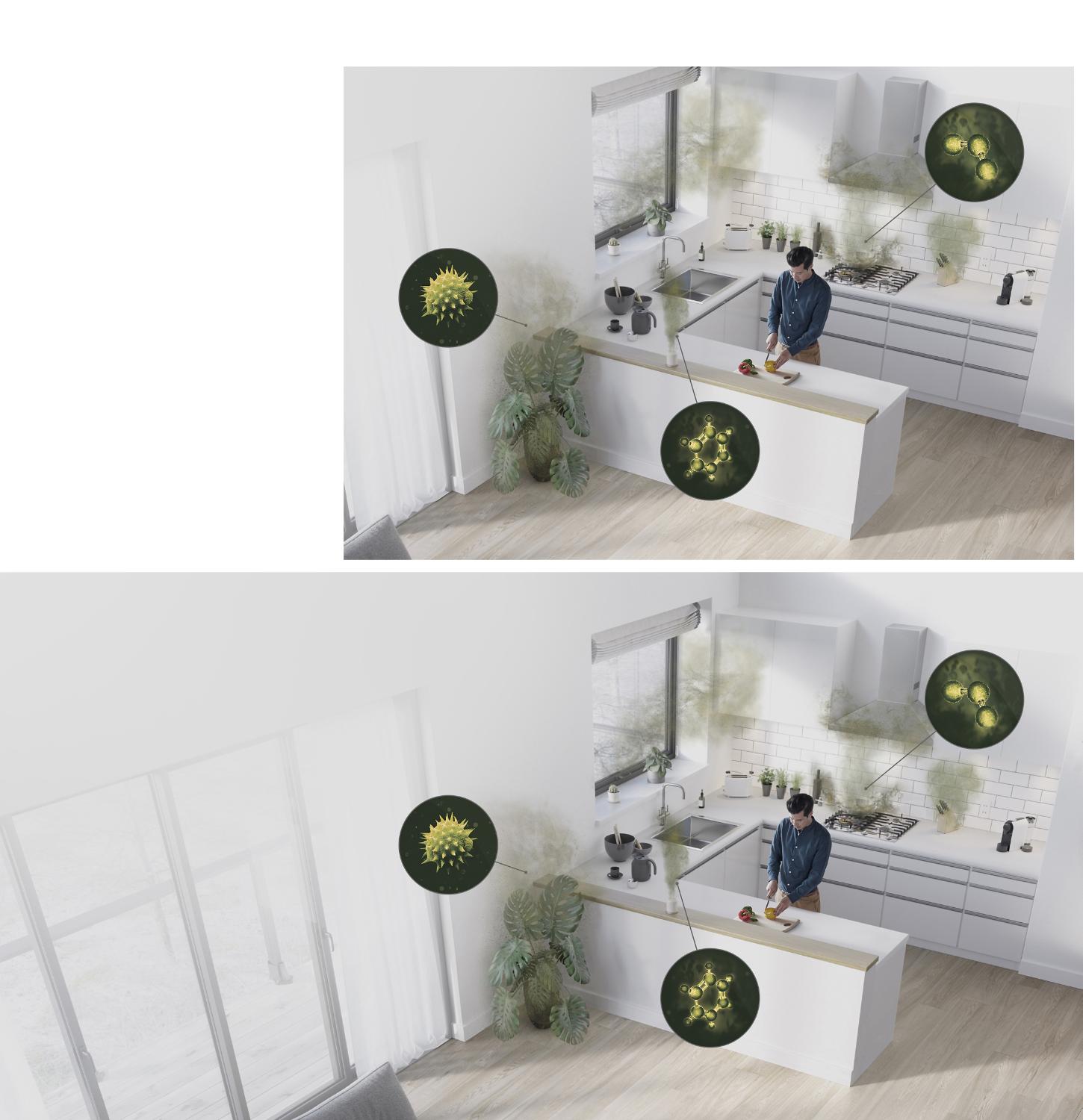
Poor air quality isn't just a problem outside.
It's a problem inside too.
From pets and flowers, to sprays and stoves, our homes can trap pollutants in the air. That's why Dyson purifiers automatically sense and remove them.
-
Pollen and allergens
PM10
-
Bacteria
PM5.0
-
Industrial emissions
PM2.5
-
Ultrafine particles
PM0.1
-
Formaldehyde (HCHO)
Carpets, rugs and flooring
-
Odours
Household fumes and cooking
-
Benzene and VOCs
Cleaning products and candles
-
Nitrogen dioxide
Gas stoves and car exhausts




The only purifier fully sealed to HEPA H13 standard
To prevent pollutants leaking back into the air, it's not just the filter that's sealed to HEPA H13 standard, it's the whole purifier. So what goes inside, stays inside.
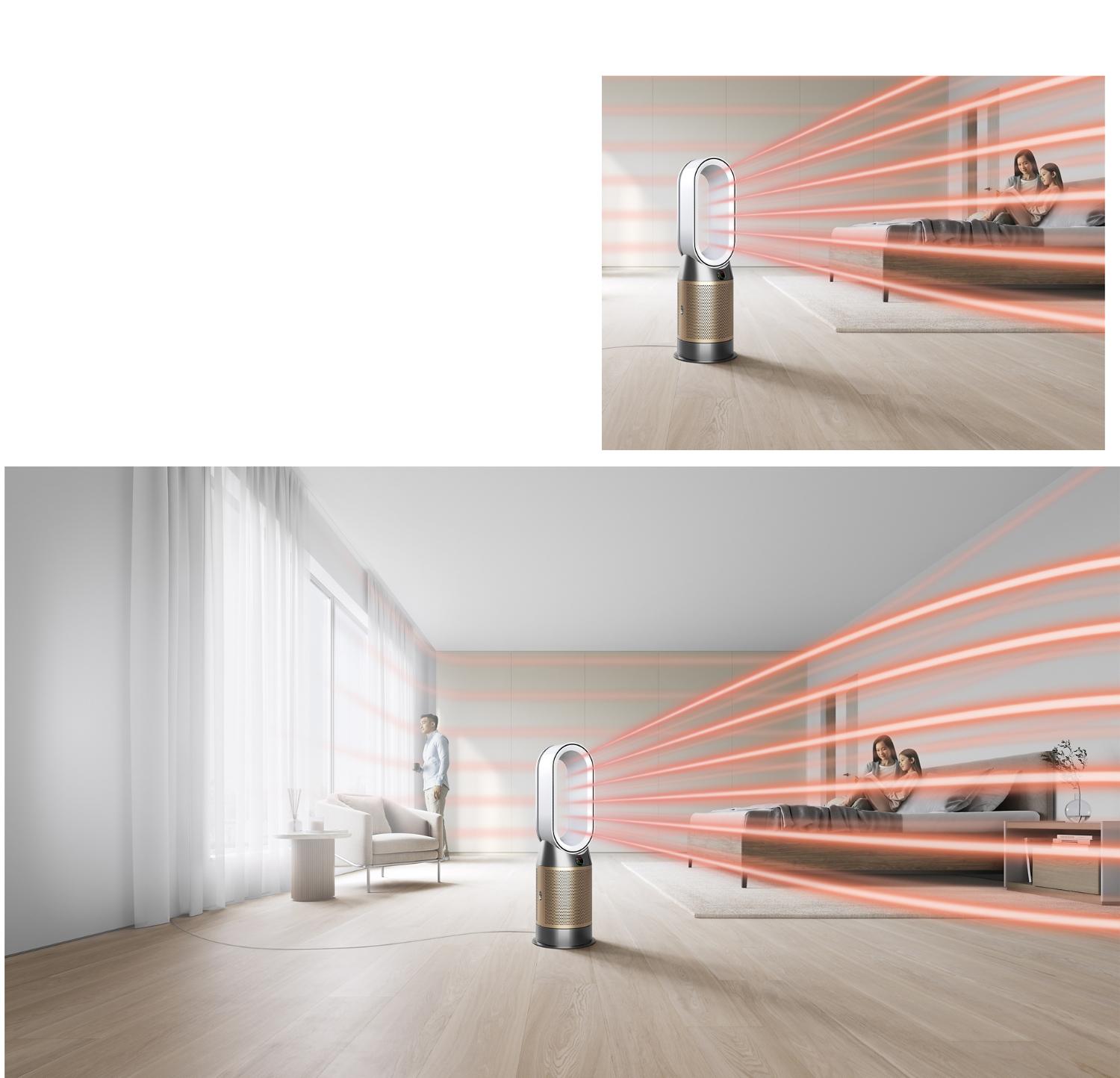
Fast, even room heating
Air Multiplier™ technology projects purified, heated air throughout the room. Once your target temperature is reached, heating automatically stops.

Smart purification, controlled by app or voice
Control and monitor air quality from anywhere with the Dyson Link app, or hands-free with compatible voice services
-

Cools you in summer
Projects over 290 litres of air a second for cooling airflow.
-

Diffused mode. Purifies without cooling you.
Airflow is diverted through the back of the machine, maintaining effective purification.
-

Night mode
For lighter sleepers, it monitors and purifies using the quietest settings along with a dimmed display.
-

Easy filter care
The catalytic filter never needs replacing. And when you need a new HEPA+Carbon filter, the Dyson Link app lets you know.
Frequently asked questions
Dyson engineers are perfectionists. Channelling our relentless dissatisfaction, we have re-engineered our latest’s purifiers to be the only purifier fully sealed to HEPA H13 standard. Capturing 99.95% of ultrafine particles and preventing pollutants from leaking back into the air you breathe.
The Dyson Purifier Cool Formaldehyde has all of the capabilities found in our advanced purification products but goes a step further to detect and destroy formaldehyde. An added solid state-sensor precisely detects formaldehyde, while our catalytic filter breaks it down into two safer molecules – carbon dioxide and water.
Formaldehyde is a polluting gas formed of carbon, hydrogen and oxygen that is commonly found in homes. Common sources of formaldehyde in your home could be: paint and varnishes, air fresheners, mattresses, furniture, household cleaners, carpets, particleboard and plywood, electronics, dryer sheets, nail polish remover, moth balls, toys, fireplaces and wood burning stoves.
We recommend replacing the HEPA+Carbon filter every 12 months. That's because over time, filters can get clogged with pollutants, and even let unpleasant odours back into the room. The machine will alert you when it’s time to change filters. A filter life reading can be found on the LCD screen and via the Dyson Link app. The catalytic filter never needs replacing.
- 1 Third party full machine testing based on GB/T 18801-2015 formaldehyde cumulative clean mass testing with continuous injection until plateau of formaldehyde CADR is achieved. Results may vary in practice.
- 2 Tested for filtration efficiency at 0.1 micons (EN1822, ISO29463)
- 3 In maximum setting. Tested for air projection, purification coverage in an 81m3 room and heating performance in a 35m3 room.
- 4 Particle challenge by DEHS oil specified in EN1822 within a chamber specified inASTM F3150. Tested in Max mode at IBR US, for whole machine efficiency above 99.95%.
- 5 Gas capture rates may vary.
- 6 Requires device to run app, Wi-Fi or mobile data, Bluetooth 4.0 support, and iOS version 10 or Android version 5 (or above). Standard data and messaging rates may apply.
- 7 Refer to the Dyson Link App for comptible voice services.




